From Constantine’s Cross to the Evil Eye: Rome’s Festival of False Gods
Leo XIV’s “peace pageant” brings pagan dancers and occult imagery to the heart of the Vatican.
At Constantine’s Arch, Leo XIV lit a candle beside leaders of every creed; at the Vatican, screens glowed with the image of a woman holding the “evil eye.” The symbolism wrote its own commentary. The Cross that once conquered pagan Rome has been replaced by a talisman meant to ward off misfortune; a fitting emblem for a Church now terrified of proclaiming the exclusive truth of Christ.
What began as a “Meeting for Peace” beneath the Arch of Constantine ended as a weeklong festival of pluralism, a Nostra Aetate jubilee choreographed to prove that the Church of dialogue can outshine the Church of doctrine. In the process, Rome managed to turn the victory of In hoc signo vinces into the closing act of a world-religions pageant.
The spectacle was not an accident. It was the logical sequel to the theology of Nostra Aetate, now staged in full color: eyes, idols, and all.
The “Spirit of Assisi,” Reloaded at the Arch of Constantine
The International Meeting for Peace, staged by Sant’Egidio, was billed as prayer, testimony, and a common message against war. Leo’s address at the Colosseum declared, “war is never holy; only peace is holy,” and grounded the evening in the Council’s Nostra Aetate. The symbolism is deliberate. Where Constantine once marched under the Cross as a sign of the true God’s triumph over idols, the pope now processes with the representatives of those idols to light a common flame for a generalized “reconciliation.” The location is catechesis: the Milvian Bridge is reimagined as an interfaith footbridge.
Catholic doctrine has never treated “peace” as a freestanding divinity. Peace is the tranquility of order that flows from the reign of Christ and the observance of God’s law. When the Church speaks about just war, she does so precisely because justice and truth sometimes require the sword to restrain grave evils. To pronounce that “only peace is holy” is to flatten an entire theological tradition, to treat Crusade, just defense, and the martyrs who resisted pagan cults as awkward relatives we no longer invite to dinner. Holiness adheres to God, to His worship, to His law, to His Church; not to an abstraction that can be equally invoked by the Qur’anic da‘wah, the Vedic pantheon, and a UN communiqué.
“Prayer together” among religions, moreover, is not neutral ground. It inevitably suggests that diverse objects of worship converge toward one divine horizon. That is why the pre-conciliar magisterium insisted upon the unique claim of revealed worship and warned repeatedly against syncretism and indifferentism. The staged simultaneity of rites, chants, and silent meditations under Roman arches doesn’t relieve that tension; it performs it. The public sees one thing: all religions are paths up the same mountain, and the Church is now happy to host the base camp.
Look again at the image: a pope in white lights a tree of oil lamps while imams, monks, patriarchs, and gurus look on. A set designer could not better express the new dogma that peace is the sacrament and pluralism the liturgy.
Nostra Aetate at Sixty: From “We Believe” to “We Are the World”
The commemoration of Nostra Aetate did not even try to hide its thesis. The celebration opened with a paganesque procession down the central aisle of the Aula, dancers bearing sun-disks and shields, the crowd filming like a pop concert.
Children later sang “We Are the World,” Michael Jackson’s humanitarian hymn, while Leo worked the room greeting unbelievers and representatives of other faiths.
A Vatican video promo flashed the blue-and-white apotropaic “evil eye” amulet, a charm meant to ward off malice, as if to say that the Church now curates the world’s spiritual trinkets in a single friendly museum.
What’s wrong with this? Start with the obvious. Catholic worship is theocentric and sacrificial. It is not a culture fair. The Church used to bring the nations into her sanctuary to adore the true God through the one Sacrifice of Christ. Now Rome brings the nations in to adore their own symbols under her roof while she provides the stage, the camera crews, and the applause. The message transmitted to every Catholic child watching is that religion is primarily a shared human aspiration toward peace, and doctrinal differences are secondary décor.
Nostra Aetate itself whatever good it encouraged in personal charity and the repudiation of hatred, has metastasized into a working theology: the Church’s primary task in the public square is to affirm the religious sense of mankind, discover “seeds of the Word” everywhere, and meet the world halfway by celebrating common values. Evangelization fades to background; mission is recoded as dialogue; the First Commandment is reinterpreted as a ban on “exclusion.” The photo of the dancers in the Aula captures that pivot better than a thousand footnotes. And the musical choice says the quiet part aloud. We are not singing Credo in unum Deum; we are singing We are the world. The new creed begins with “we.”
Drawing “New Maps of Hope”: Education without the Deposit of Faith
Leo’s apostolic letter for the 60th anniversary of Gravissimum educationis is polished, programmatic, and dangerous. Page after page urges a “constellation” of schools and universities to become laboratories of inclusion, dialogue, ecology, and digital discernment. Newman is named co-patron with Aquinas, but the quoted Newman is the broad humanist of The Idea of a University, not the convert who bled for dogma. Then comes the line that reveals the engine running beneath the prose: in educational contexts we must not “raise the flag of possessing the truth.” That sentence is the anti-syllabus of the week.
If a Catholic university will not teach that the Church possesses revealed truth, not as a trophy, but as a trust, what is it for? “Less cathedrae and more tables,” the letter urges, because knowledge should be shared conversationally. Very well. But the apostles did not meet the nations at round tables; they preached, taught, baptized, and ordered the new communities around the altar. The letter’s “Global Educational Pact,” its seven pathways plus three new priorities, and its insistence on “peace disarmed and disarming” together amount to a catechism of horizontalism. The transcendent makes cameo appearances, often in pious phrases. The through-line is anthropocentric: elevate the person, dismantle conflict, choreograph fraternity, manage technology, protect the planet. Evangelization becomes the educational wing of NGOs, and truth, demoted from possession to process, must never interrupt the choreography.
Catholic identity is not based on feelings; it is baptismal incorporation into Christ and assent to the truths He revealed. A school that fears “raising the flag of possessing the truth” will, in practice, raise the rainbow of inclusivity over the tabernacle of the Logos.
“Communicatio in sacris” and the Model of the First Millennium
Leo’s address to Mar Awa III and the Assyrian delegation boasts of “mutual recognition of sacraments” and an “enabling” of certain sacramental sharing while the parties work toward a first-millennium model of communion that avoids “absorption” or “domination.” Read plainly, it celebrates the normalization of intercommunion with a church that is objectively outside visible Catholic unity. The rhetoric of “exchange of gifts” makes that sound generous; the reality is that the visible unity of the Church, one faith, one sacramental order, one governance, is treated as a negotiable structure to be reverse-engineered from a curated reading of antiquity.
When Rome promises to “celebrate together at the same altar,” not as the fruit of conversion to unity in doctrine and jurisdiction but as the engine that will drive a convergence, she inverts the order of truth and charity. Shared chalice first, shared faith later. That is not the Catholic way.
A Homily that Turns Easter into Optics
Even the seemingly harmless Eucharistic homily to university students carries the week’s leitmotif. Easter becomes “a journey,” the Jubilee a reminder that we need “a wider perspective,” study a grace that helps us “lift our eyes.” Fine words, and who denies the need for conversion? But the Resurrection is not a metaphor for intellectual horizons; it is a historical, bodily fact by which Christ conquered sin and death and founded His Church with a mandate to teach all nations. When the homily’s center of gravity shifts from that proclamation to a spiritualized call for openness and “new perspectives,” the students leave with precisely the formation this week is designed to deliver: Christianity as vista, not verdict.
Why the Photos Matter
At the Arch of Constantine, the Cross no longer conquers; it collaborates. In the Aula, the nations no longer bow to Christ; they perform before Him. In the apostolic letter, the deposit of faith no longer governs education; it “accompanies” a process whose watchwords are empathy, listening, and choreography. And in the ecumenical address, the altar no longer presupposes unity; it manufactures it.
This is why faithful Catholics look at these images and hear these texts with grief rather than applause. The Church is charged with the First Commandment. She must adore God alone and teach all peoples to do the same. She must love her neighbors not by affirming their idols, but by calling them — gently, publicly, courageously — to the worship of the Triune God through the one Mediator, Jesus Christ. Peace without truth is anesthesia. Dialogue without doctrine is theater. Education without the Creed is social work with candles.
The revolution understands that rites catechize more powerfully than essays. That is why the week ended with children singing “We Are the World.” Teach them to chant the brotherhood of man while they stand under the dome of Peter and they will never again hear the difference between that chorus and the Credo. The photos are not accidental. They are the new missal.
Conclusion: Back to the Milvian Bridge
The Church once preached at Constantine’s Arch that the world’s peace comes only under Christ’s sign. Today Rome preaches that the world’s religions, together, will improvise a peace if they keep the candles lit. One vision converts the nations and orders them to God. The other warms the crowd and orders the Church to the nations. The first built cathedrals; the second hangs banners. If we want the former again, we must stop lighting torches at interfaith shrines and start lighting beacons of doctrine, worship, and mission. In hoc signo vinces was not a call to community-building. It was the Lord’s judgment on idols and the world’s first and last hope.
If you value independent Catholic analysis and want to help keep this work going, you can make a contribution or subscribe below. Every donation directly supports the writing, research, and production of Hiraeth in Exile.
Thank you for helping preserve independent Catholic journalism rooted in truth and tradition.






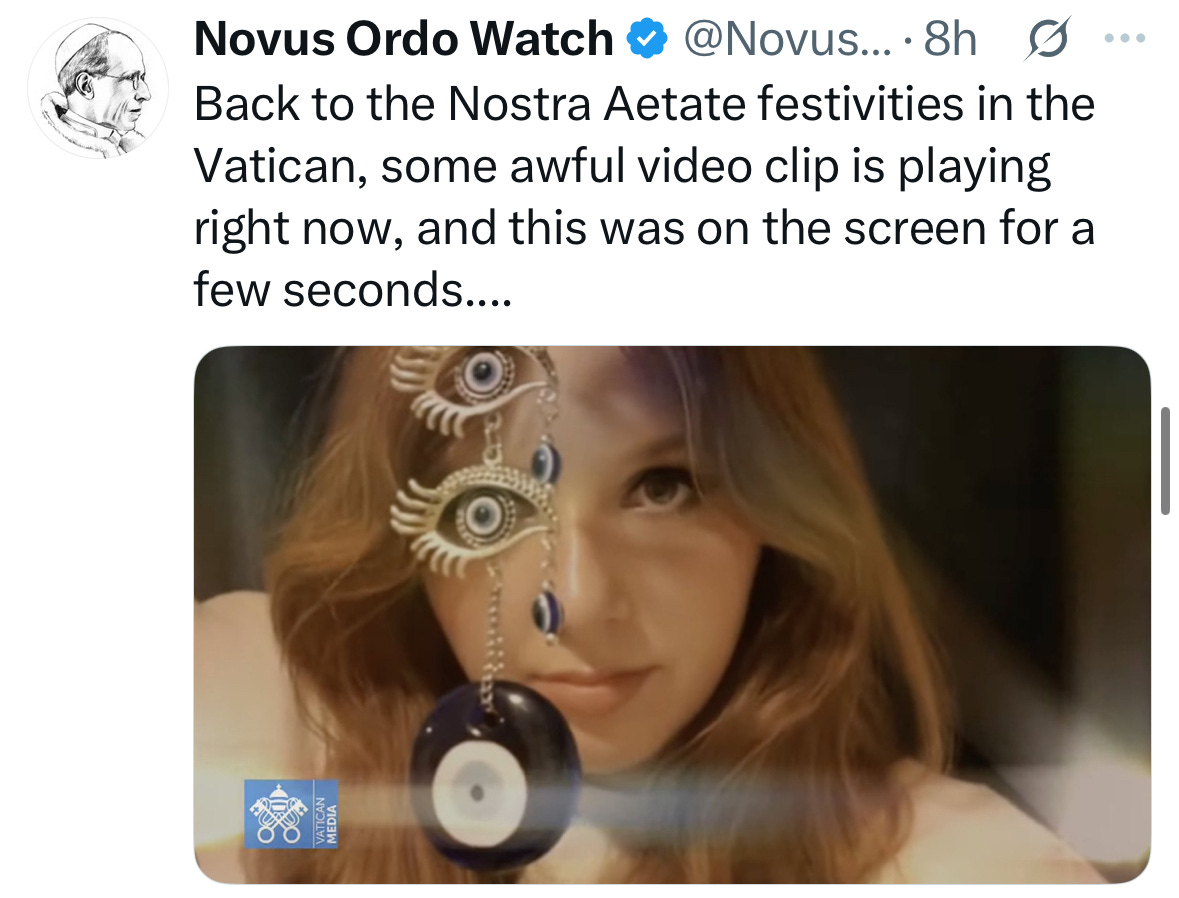
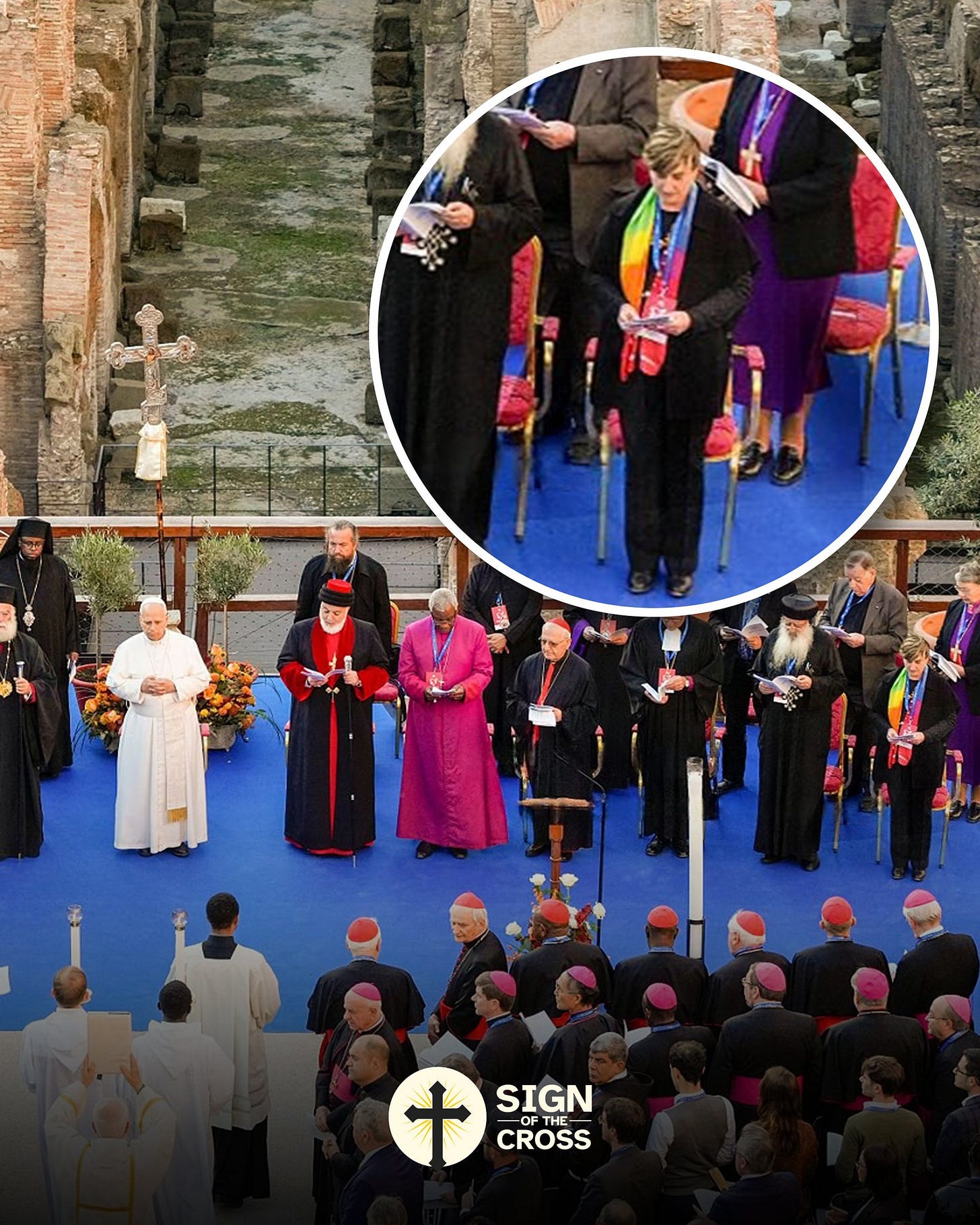
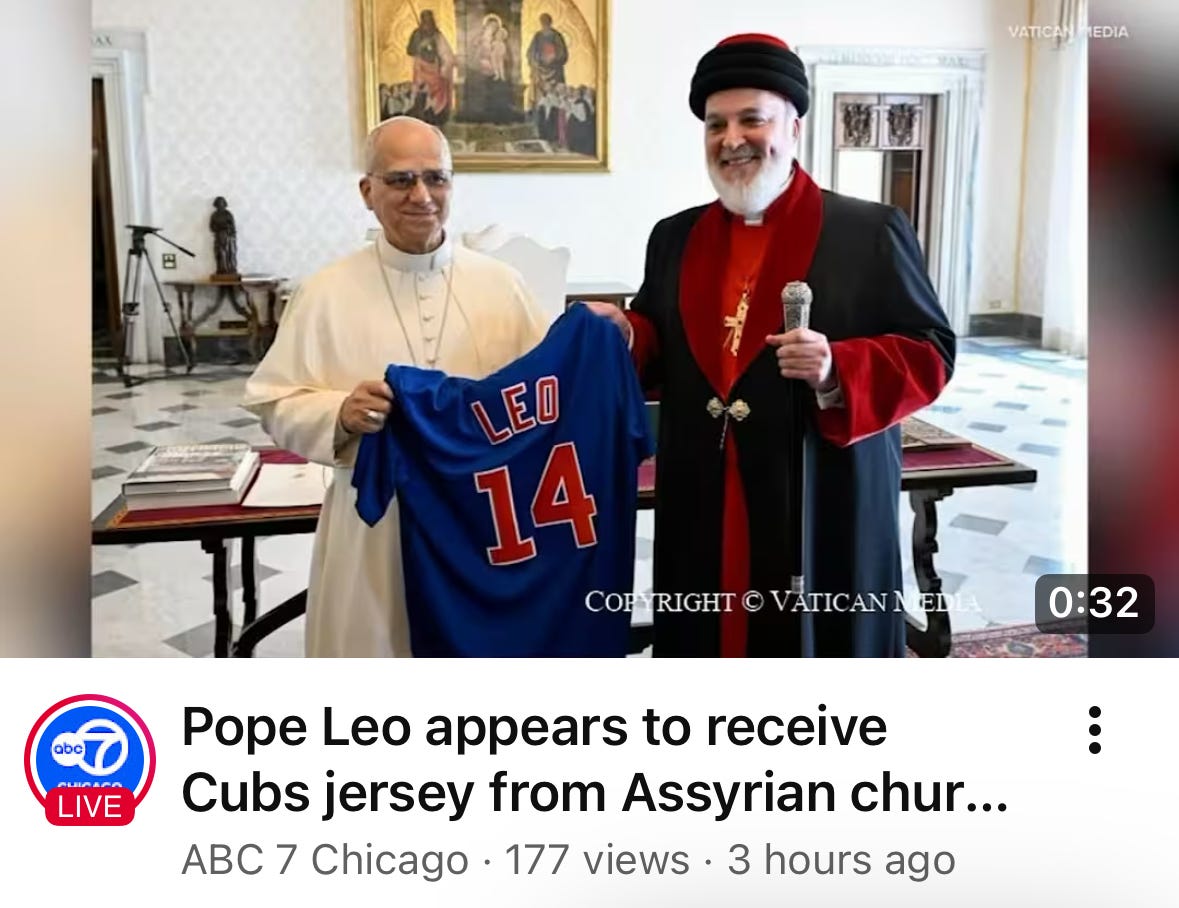
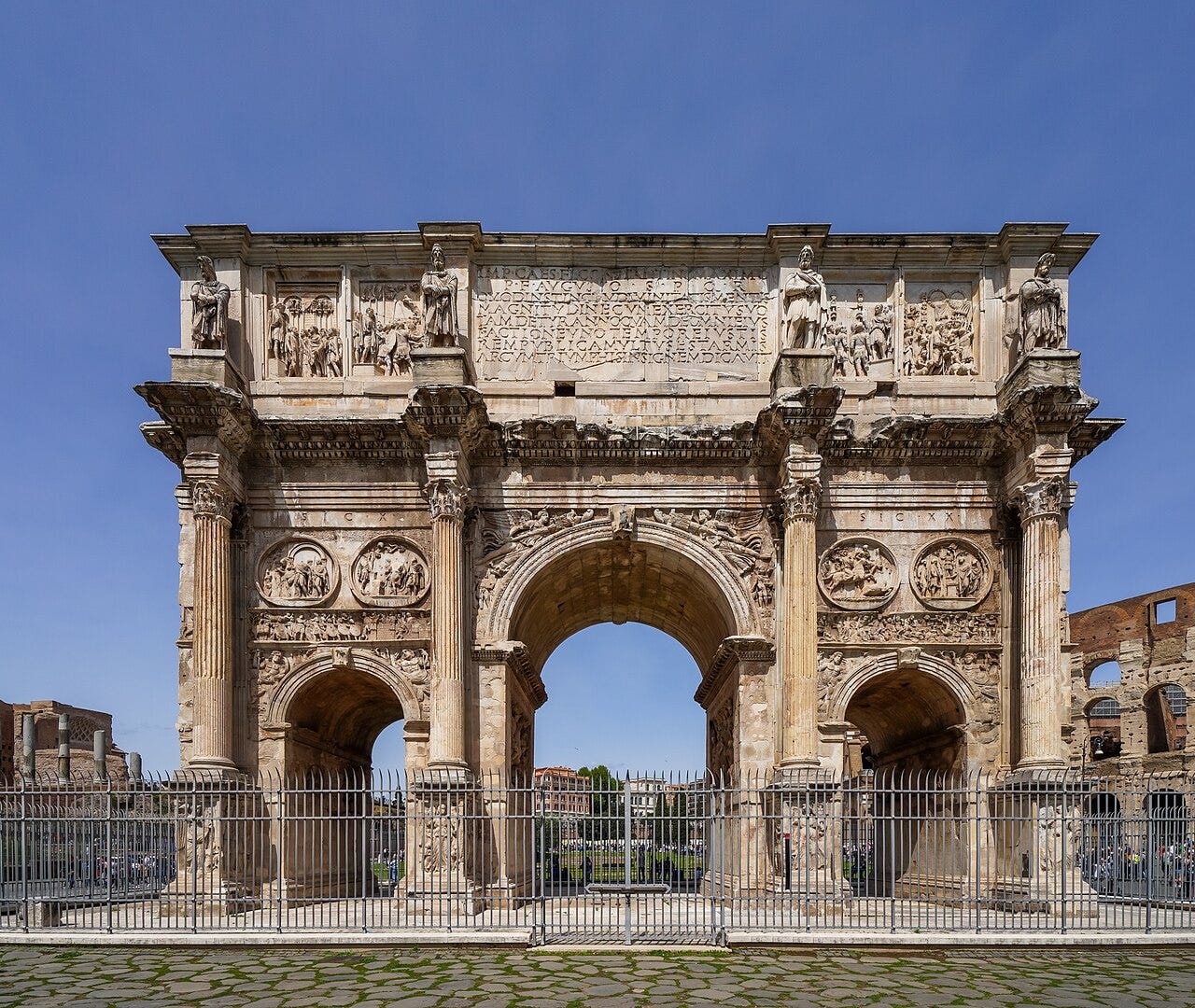
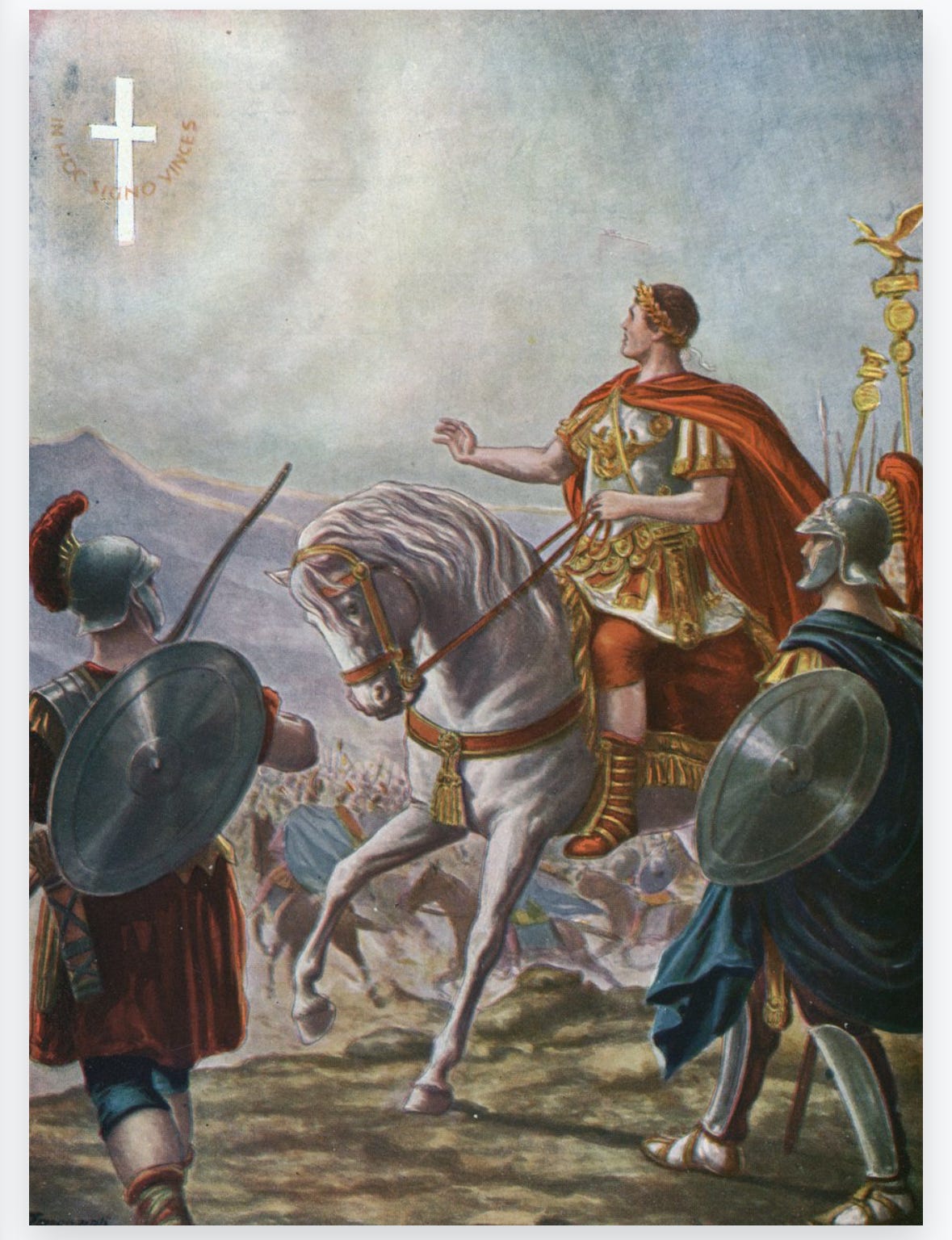
[Satan] will set up a counter church, which will be the ape of the [Catholic] Church ... It will have all the notes and characteristics of the Church but in reverse and emptied of its divine content. We are living in the days of the Apocalypse, the last days of our era. The two great forces—the Mystical Body of Christ and the Mystical Body of the anti-Christ—are beginning to draw battle lines for the catastrophic contest. The false prophet will have a religion without a Cross. A religion without a world to come. A religion to destroy religions. There will be a counterfeit church.
Christ’s Church, the Catholic Church will be one; and the false prophet will create the other. The false church will be worldly, ecumenical and global. It will be a loose federation of churches and religions, forming some type of global association. A world parliament of churches. It will be emptied of all divine content, it will be the mystical body of the anti-christ. The Mystical Body on earth today will have its Judas Iscariot, and he will be the false prophet. Satan will recruit him from our bishops.
The Antichrist will not be so called; otherwise, he would have no followers. He will not wear red tights, nor vomit sulphur, nor carry a trident nor wave an arrowed tail as Mephistopheles in Faust. This masquerade has helped the Devil convince men that he does not exist. When no man recognizes him, the more power he exercises. God has defined Himself as "I am Who am," and the Devil as "I am who am not."
Nowhere in Sacred Scripture do we find warrant for the popular myth of the Devil as a buffoon who is dressed like the first "red." Rather, is he described as an angel fallen from Heaven, as "the Prince of this world," whose business it is to tell us that there is no other world. His logic is simple: if there is no Heaven, there is no Hell; if there is no Hell, then there is no sin; if there is no sin, then there is no judge; and if there is no judgment, then evil is good, and good is evil. But above all these descriptions, Our Lord tells us that he will be so much like Himself that he would deceive even the elect—and certainly no devil ever seen in picture books could deceive even the elect.
How will he come in this new age to win followers to his religion? The pre-Communist Russian belief is that he will come disguised as the great humanitarian; he will talk peace, prosperity and plenty, not as means to lead us to God but as ends in themselves.
The third temptation in which Satan asked Christ to adore him and all the kingdoms of the world would be His, will become the temptation to have a new religion without a Cross, a liturgy without a world to come, a religion to destroy a religion or a politics which is a religion—one that renders unto Caesar even the things that are God’s. In the midst of all his seeming love for humanity and his glib talk of freedom and equality, he will have one great secret, which he will tell to no one: he will not believe in God.
Because his religion will be brotherhood without the fatherhood of God, he will deceive even the elect. He will set up a counter church which will be the ape of the Church, because he, the Devil, is the ape of God. It will have all the notes and characteristics of the Church but in reverse and emptied of its divine content. It will be a mystical body of the Antichrist that will in all its externals resemble the mystical body of Christ.
[Venerable Abp. Fulton J. Sheen in 1948]
wow,Leo is more deceptive than francise... and more dangerous